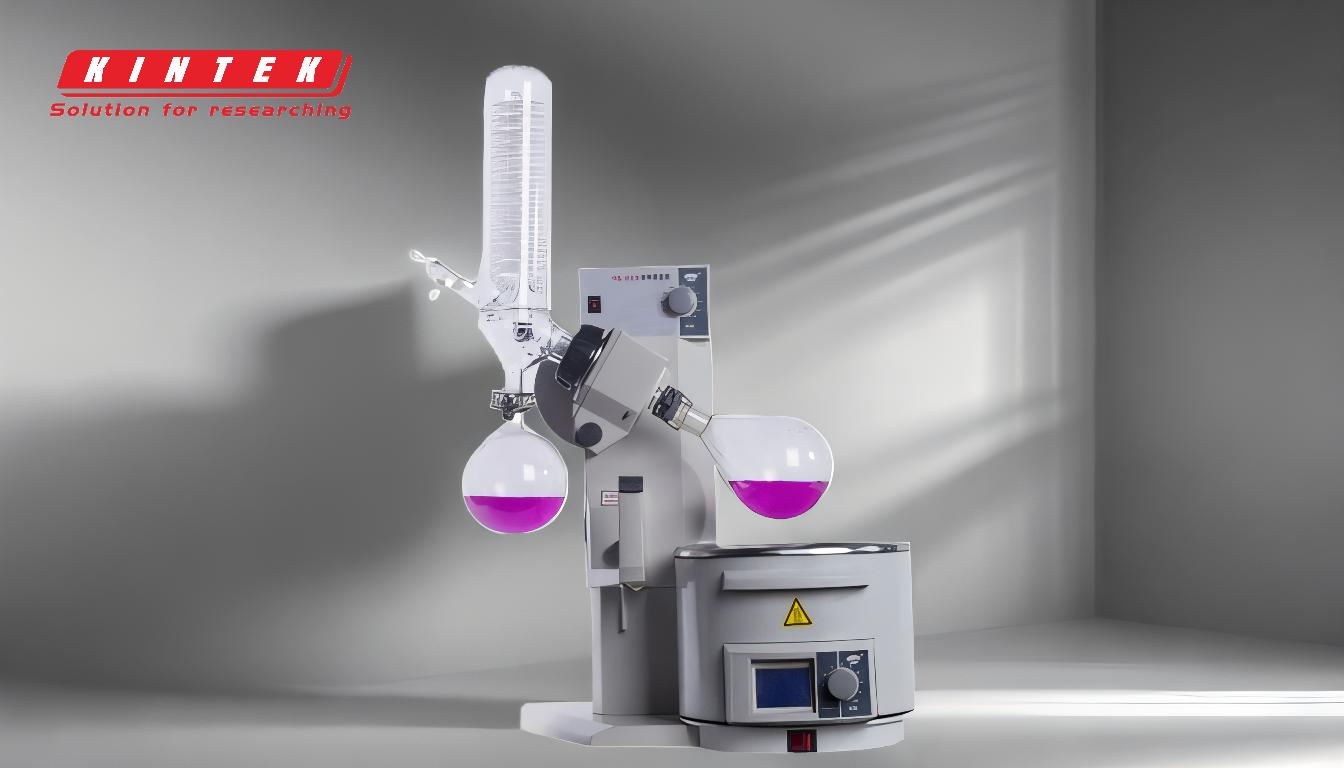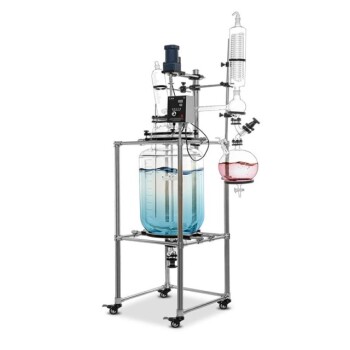Rotary evaporators (rotovaps) are essential tools in laboratories for solvent removal and concentration processes, but they come with several hazards that must be managed to ensure operator safety. These hazards include implosions, explosions, entanglement risks, and exposure to harmful vapors or chemicals. Proper safety measures, such as using personal protective equipment (PPE), inspecting glassware, managing rotating parts, and ensuring proper ventilation, are critical to mitigating these risks. Additionally, careful handling of solvents, avoiding unstable compounds, and adhering to operational guidelines can prevent accidents and injuries.
Key Points Explained:

-
Implosion Hazards:
- Cause: Implosions can occur due to flawed or damaged glassware, especially under vacuum conditions. The pressure difference between the inside and outside of the flask can cause it to collapse violently.
-
Prevention:
- Use high-quality, coated glassware that can withstand extreme pressure and heat.
- Inspect glassware for cracks, scratches, or other flaws before use.
- Secure flasks and bump traps with clips to prevent detachment during operation.
-
Explosion Hazards:
- Cause: Explosions may result from concentrating unstable impurities or drying unstable compounds such as organic azides, acetylides, nitro-containing compounds, or molecules with strain energy. Air-reactive materials can also cause violent reactions if air leaks into the apparatus.
-
Prevention:
- Avoid concentrating unstable impurities or compounds.
- Ensure proper sealing of the apparatus to prevent air leaks.
- Use a bump trap to prevent contamination and reduce the risk of explosions.
-
Entanglement Risks:
- Cause: Rotating parts of the rotovap, such as the motorized lift or the rotating flask, can entangle loose clothing, hair, necklaces, or other jewelry, leading to serious injuries.
-
Prevention:
- Wear fitted lab coats and avoid loose clothing or accessories.
- Tie back long hair and remove jewelry before operating the rotovap.
- Maintain a safe distance from rotating parts during operation.
-
Exposure to Harmful Vapors and Chemicals:
- Cause: Solvent vapors, acids, and other chemicals used in rotovap operations can be hazardous if inhaled or if they come into contact with skin or eyes.
-
Prevention:
- Use a protective hood with proper ventilation to remove harmful vapors.
- Wear appropriate PPE, including gloves, goggles, and lab coats.
- Ensure the solvent collection flask is emptied and cleaned before use to avoid mixing incompatible chemicals.
-
Thermal Hazards:
- Cause: Hot oils, heated glassware, and high-temperature water baths can cause burns if not handled properly. Overheating solvents beyond their boiling points can also lead to accidents.
-
Prevention:
- Monitor and control the water bath temperature to ensure it does not exceed the boiling point of the solvent.
- Use caution when handling hot glassware or oils.
- Implement motorized lifts or shutoff procedures to prevent overheating during power outages or dry heating.
-
Operational Safety Precautions:
-
General Guidelines:
- Follow manufacturer instructions and laboratory protocols for rotovap operation.
- Regularly inspect and maintain equipment to ensure it is in good working condition.
- Train all users on proper safety procedures and emergency response measures.
-
General Guidelines:
By understanding and addressing these hazards, laboratory personnel can safely operate rotary evaporators and minimize the risk of accidents or injuries. Proper training, adherence to safety protocols, and the use of appropriate safety equipment are essential for ensuring a safe working environment.
Summary Table:
| Hazard | Cause | Prevention |
|---|---|---|
| Implosion | Flawed or damaged glassware under vacuum conditions | Use high-quality glassware, inspect for flaws, secure flasks with clips |
| Explosion | Unstable impurities or air-reactive materials | Avoid unstable compounds, ensure proper sealing, use bump traps |
| Entanglement | Rotating parts entangling loose clothing or accessories | Wear fitted lab coats, tie back hair, remove jewelry, maintain safe distance |
| Chemical Exposure | Harmful vapors or chemicals from solvents and acids | Use protective hoods, wear PPE, clean solvent flasks before use |
| Thermal Hazards | Burns from hot oils, glassware, or overheating solvents | Monitor water bath temperature, handle hot items carefully, use motorized lifts |
| Operational Safety | Improper use or lack of maintenance | Follow protocols, inspect equipment, train users on safety procedures |
Ensure your lab's safety with expert guidance—contact us today for more information!










